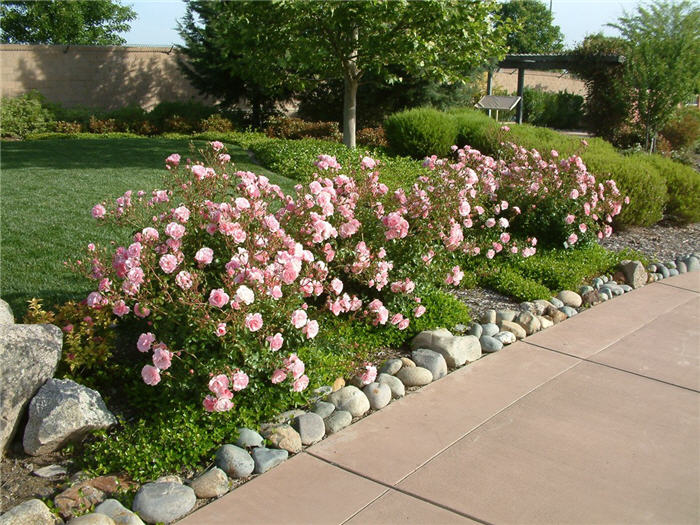| Botanical Name: Rosa floribunda | |
| Common Name: Floribunda Rose |

-
Anatomy
-
Culture
-
Design
Plant Type
Shrub, Herb
Height Range
1-3', 3-6'
Flower Color
Pink, Red, Yellow, White
Flower Season
Summer
Leaf Color
Green
Bark Color
Brown
Fruit Color
Orange, Red
Fruit Season
Fall, Intermittent
Sun
Full, Half
Water
Medium
Growth Rate
Moderate
Soil Type
Clay, Loam
Soil Condition
Average, Rich, Poor, Well-drained
Soil pH
Acid, Neutral
Adverse Factors
Thorns/Spines
Design Styles
English Cottage, Formal, Mediterranean, Ranch, Seascape
Accenting Features
Fall Color, Fragrance, Showy Flowers
Seasonal Interest
Summer, Fall
Location Uses
Background, Entry, Perennial Border, Shrub Border, Foundation, Patio
Special Uses
Erosion Control, Hedge, Mass Planting, Small Spaces
Attracts Wildlife
Birds, Butterflies
Information by: Stephanie Duer
Photographer: GardenSoft
Photographer: GardenSoft
-
Description
-
Notes
This group of roses is characterized by short stems topped with clusters of small flowers. They tend to have a rounded, mounded form, generally as tall as they are wide. They have thick, leathery leaves, sometimes producing lovely fall color, but also helping to grow vigorous, sturdy shrubs. Flowers are in the typical rose colors (though maybe less of the kaleidoscope that are the hybrid teas), from single-petaled to cabbage, and maybe with fabulous fragrance. Some bloom once, but most bloom off and on all summer. Most produce great hips, quite suitable for harvesting, though leave some for the song birds.
Grow in loamy, well drained soil in full sun. Avoid overhead watering as the practice may encourage leaf diseases. Pruning is a little less particular than with teas and grandifloras, but even so, it should still be done with care and thought to future growth (see Guides).